#intermediate egret
Text

Nice comparative chart by nature guide Kumasuke, showing the size differences between heron/egret species found commonly in Japan:
Daisagi: great white heron or great egret. Note how the blue-green gape going past the eye
Chûsagi: intermediate egret or yellow-billed egret. Note the yellow gape stopping under the eye
Kosagi: little egret. Note the yellow feet + the fluffy crown
If I remember well, most egret/heron species slightly change coloring and/or grow fluffy feathers during mating season. Those feathers were once used for kanzashi hairpins, a remnant are the katsuyama kanzashi worn by maiko for Gion matsuri (see the butterflies faint "antennas"?):
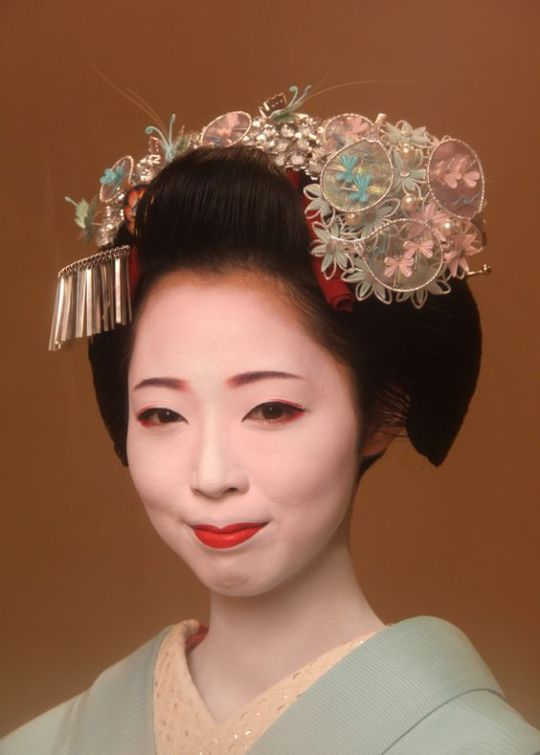
Nowadays egret are protected and feathers still in use are from ancient stocks.
Egret species are often virtually impossible to tell apart in Japanese patterns. On this blog, I simply tag any of those birds under "sagi" :)
#japan#ressources#chart#reference#bird#sagi#heron#egret#daisagi#chuusagi#kosagi#great white heron#great egret#intermediate egret#yellow bill egret#little egret#kanzashi#egret feathers#gion matsuri#maiko kanzashi
121 notes
·
View notes
Text
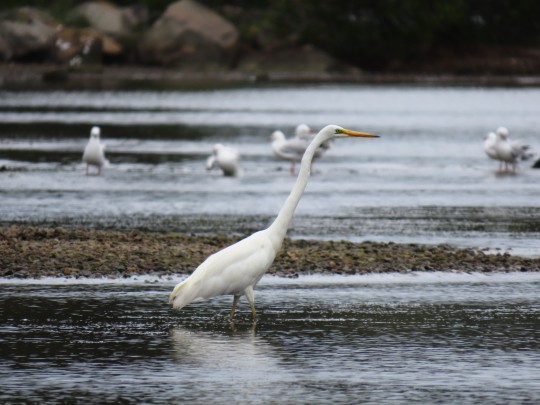



Intermediate Egret
15 notes
·
View notes
Text

Intermediate Egret
#australia#original photographers#photographers on tumblr#wildlife#wildlife photography#b&w#bird#intermediate egret
1 note
·
View note
Text
Intermediate Appetite

An Intermediate Egret seeming to have an appetite for new things as it searches among the petunias. Photo credit: Jonathan Chua.
The egret was on elevated ground so I had only need to walk up the slope slowly towards it until the camera was level with the bird.
I preferred this view as it drew me instinctively into its world and also it gave better subject isolation from the background.
#photographers on tumblr#Ardea intermedia#bird photography#bird pics#flora fauna#intermediate egret photos#photography tips#sigma 18-300mm#sigma photography#sigma sd quattro h
2 notes
·
View notes
Text
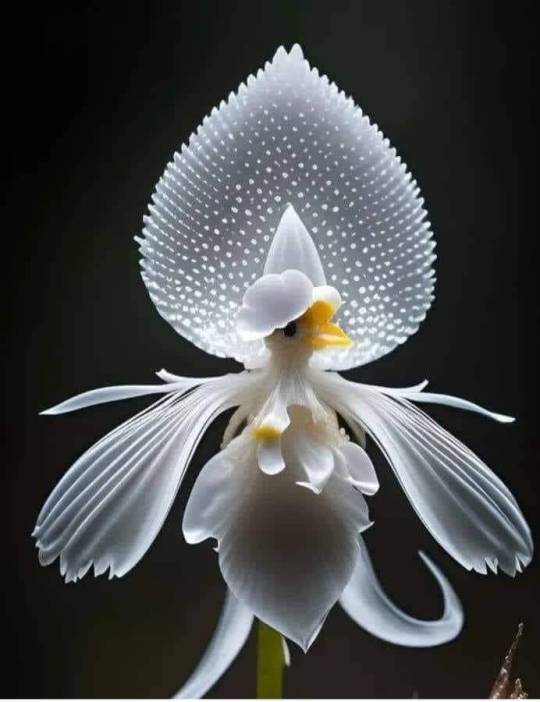
"Ethereal Elegance: The White Egret Orchid"
Captured in this image is the White Egret Orchid (Habenaria radiata), a botanical marvel celebrated for its delicate beauty that echoes the poised elegance of an egret in flight. Believed to symbolize purity and the spirit of freedom, this orchid enchants with its white, fringed petals that dance like feathers on the wind.
Thriving in cool to intermediate conditions with high humidity and ample light, the White Egret Orchid requires careful attention to mimic its natural boggy habitat. Water it regularly but allow for good drainage—its roots should never sit in water. With the right care, this orchid will grace your space with its otherworldly charm.
#orchid#蘭#orchids#蘭花#gardening#gardeningtips#gardeninspiration#gardening101#the white egret orchid (habenaria radiata)
24 notes
·
View notes
Text

Intermediate Egret
4 notes
·
View notes
Text
Little Egret
Notice the distinct Black beak that helps differentiate the intermediate egret with the little egret.

View On WordPress
0 notes
Photo

Intermediate erget's golden hour shots Equipment details: Nikon D7500 with Tamron SP 150-600mm Di VC USD G2 f/5-6.3 #egret #intermediateegret #wildlifepictures #wildislife #wildlife #birdspics #birdlife #birdspictures #birding #birdspecies #wildlifephotography #photography #birdlovers #wildlifelover #naturelove #natgeoyourshot #naturephotography #natgeo #naturepics #naturelife #nikond7500 #tamron150600mm #tamronlens https://www.instagram.com/p/CpF6AhXs8P_/?igshid=NGJjMDIxMWI=
#egret#intermediateegret#wildlifepictures#wildislife#wildlife#birdspics#birdlife#birdspictures#birding#birdspecies#wildlifephotography#photography#birdlovers#wildlifelover#naturelove#natgeoyourshot#naturephotography#natgeo#naturepics#naturelife#nikond7500#tamron150600mm#tamronlens
0 notes
Text
HSBC Mumbai Bird Race on 5 February 2023, Sunday
Race route: 8 am Behind Inorbit mall, Malad West > 1 pm to 3 pm New Zealand Hostel at Aarey Milk Colony, Goregaon East > 4 to 6 pm Bhandup Pumping station > 6:45 pm IIT campus for get together.
53 bird species seen:
Ashy Drongo (Dicrurus leucophaeus)
Ashy Prinia (Prinia socialis)
Asian Koel (Eudynamys scolopaceus)
Asian Palm Swift (Cypsiurus balasiensis)
Barn Swallow (Hirundo rustica)
Bar-tailed Godwit (Limosa lapponica)
Baya Weaver (Ploceus philippinus)
bee-eater sp. (Merops sp.)
Black Drongo (Dicrurus macrocercus)
Black Kite (Milvus migrans)
Black-headed Gull (Chroicocephalus ridibundus)
Black-headed Ibis (Threskiornis melanocephalus)
Black-winged Stilt (Himantopus himantopus)
Brahminy Starling (Sturnia pagodarum)
Brown-headed Gull (Chroicocephalus brunnicephalus)
Cattle Egret (Bubulcus ibis)
Common Myna (Acridotheres tristis)
Common Redshank (Tringa totanus)
Common Sandpiper (Actitis hypoleucos)
Common Tailorbird (Orthotomus sutorius)
Common Tern (Sterna hirundo)
Coppersmith Barbet (Psilopogon haemacephalus)
Crimson-backed Sunbird (Leptocoma minima)
Great Egret (Ardea alba)
Greater Coucal (Centropus sinensis)
Greater Flamingo (Phoenicopterus roseus)
Green Sandpiper (Tringa ochropus)
House Crow (Corvus splendens)
House Sparrow (Passer domesticus)
Indian Golden Oriole (Oriolus kundoo)
Indian Paradise-Flycatcher (Terpsiphone paradisi)
Indian Pond-Heron (Ardeola grayii)
Intermediate Egret (Ardea intermedia)
Large-billed Crow (Corvus macrorhynchos)
Laughing Dove (Spilopelia senegalensis)
Lesser Flamingo (Phoeniconaias minor)
Little Cormorant (Microcarbo niger)
Little Egret (Egretta garzetta)
Long-tailed Shrike (Lanius schach)
Oriental Magpie-Robin (Copsychus saularis)
Puff-throated Babbler (Pellorneum ruficeps)
Purple Sunbird (Cinnyris asiaticus)
Purple-rumped Sunbird (Leptocoma zeylonica)
Red-vented Bulbul (Pycnonotus cafer)
Red-wattled Lapwing (Vanellus indicus)
Red-whiskered Bulbul (Pycnonotus jocosus)
Rock Pigeon (Columba livia)
Rose-ringed Parakeet (Psittacula krameri)
Rosy Starling (Pastor roseus)
Ruff (Calidris pugnax)
Species
Spotted Dove (Spilopelia chinensis)
White-throated Fantail (Rhipidura albicollis)
White-throated Kingfisher (Halcyon smyrnensis)
Wood Sandpiper (Tringa glareola)


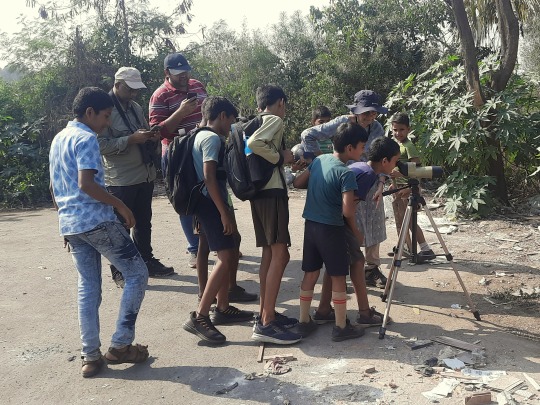

Check our previous Mumbai Bird Races here: 2015 , 2019 , 2022 & 2024.
#bird race#birdrace#Mumbai#HSBC#Nikon#India Bird Races#birds#birdwatching#birding#birders#birdwatch#bird#race
0 notes
Photo
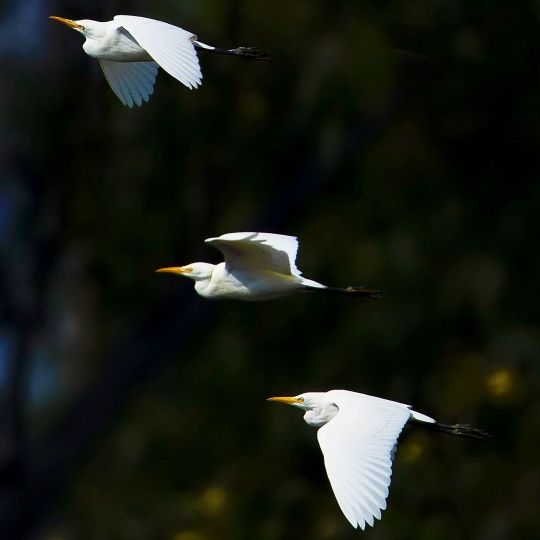
There are so many varieties of Egrets. This is a picture of little egrets flying in a flock. In India alone, there is Great egret, cattle egret , intermediate egret , little egret and even the herons fall into the egret family. These are considered to be good omen by the older folks.. .. #photography #birding #birdphotography #instabird #birds_adored https://www.instagram.com/p/CjHnRhcvT5Y/?igshid=NGJjMDIxMWI=
0 notes
Text
Searching for the Hyphen
by Natalie Sun / photos: the author

“中白鷺的腳腳和嘴巴是黃的. 大白鷺有黑色腳腳, 黃色的嘴巴.” (Intermediate egrets’ feet and mouths are yellow. Large egrets have black feet, yellow mouths.)
白熊 (pronounced “by shiong”) patiently explained the differences between the large and intermediate egret to me for the umpteenth time. 白熊, which translates directly to polar bear, earned this nickname due to his height and paleness. To this day, I am still not sure what his actual name is. He hurriedly pointed out the window as the van drove past an egret wading in rice paddies. “你看.中白鷺.” (Look. Intermediate egret.)
“那小白鷺呢?” (How about small egrets?) I asked. “我已經忘了.” (I already forgot.)
“黑嘴巴,黑腳.” (Black mouth, black feet).
I try to commit it to memory, but after a minute I turn my head and give him a blank stare. “算了, 我每一次看到一隻鷺就問你吧.” (Whatever, I’ll just ask you every time I see a white bird.)
He chortled in response. “喂, 你別像這樣啦! 你努力一點吧."(Hey, don’t be like this! Put some effort into it.) The van lurched to a stop, throwing me and 白熊 against our safety belts. We eyed each other before looking outside. “喔,我們快到了.”(Oh, we’re almost there.)
The van slowly turned and pulled up the dirt path to the dairy farm we were getting blood samples from, rocking side to side and jostling awake the students in the back that were shadowing us for the day. As 白熊 and I waited outside for them to sleepily file out of the van, I twisted my waist for a deep stretch and breathed in the familiar scent of cows before I heard a rough voice from in front of me,
“你好像不是台灣人… 你是…韓國人.” (You don’t seem to be Taiwanese. You are….Korean.)
白熊 and I turned to look to see who had said the all-too familiar phrase. I was facing the driver, who had been quiet the entire drive there. He squinted in the sunlight as he threw on a driver cap over his balding head. I smile out of reflex but before I can open my mouth, he throws in a second guess, “還是日本人?” (Or are you Japanese?)
When I speak to someone new here – or when someone hears me speak – for an extended amount of time, often a barrage of guesses in the form of statements come hurling at me. You are from Korea. Japan. China. Singapore. Malaysia. Eventually, ranging from a few seconds to a few minutes, they give up, and ask the question that minorities are too familiar with. Where are you from?
Unlike in the States, I was rarely insulted by the question (albeit annoyed), because I believed they had enough evidence to justify their conclusion that I was a foreigner. I consider myself Taiwanese-American, but I am fully aware that there are giveaways that indicate I was neither born nor raised in Taiwan. Given time, Taiwanese people can hear the difference in my voice. My intonations don’t fluctuate as much, I curl my tongue a little, and my Mandarin, though seemingly fluent at first, shows its holes as discussions become more complex. But at least in asking, it was an invitation for me to present a holistic rundown of who I am.
More confusing and frustrating for me to navigate, however, are interactions so short that people assume I am a local. Interactions with servers at stalls and restaurants make up a considerate part of those. I could feel their impatience and frustration as they attributed the amount of time I spent looking at the menu to an inability to make a decision rather than my inability to read all the characters. Or when the veterinarians I work with overestimate my vocabulary and start explaining procedures and complex statistical analysis in Mandarin. On a good day, I can understand everything save a term here or there. On a bad day, I can only catch the general topic of the conversation. Do I interrupt and ask them to translate everything they just said when they might not know the terms in English? Do I ask the servers for an English menu? Do I explain that I am American-born when I enter the store to gain some judgement-free time or to justify my different behavior? These questions followed me into the stationery stores, boutiques, and food stalls that I visited, along with the veterinary hospital I worked at.
Subconsciously then consciously, I slowly began to mold my identity to avoid these situations. I began drifting from Taiwanese-American to either Taiwanese or American, “us” or “them,” in every day interactions. Whichever language I started with was the one I spoke with for the entire conversation. My Mandarin shifted a little by picking up common Taiwanese phrases and forcing my tongue flat when I talked. When I anticipated an interaction outside of my linguistic comfort zone, I spoke English, and consequently didn’t have to explain why my Mandarin was half-baked or why I didn’t understand certain social etiquettes or customs, amongst other things. I began prefacing my order at new restaurants that I was American, and indeed gained a ridiculous amount of judgement-free time.
At first, this worked. It was easier for others to categorize and interact with me as “us” or “them” and I had learned both parts and acted accordingly. At the least, it certainly made trying and ordering at new restaurants easier. But after a couple weeks, as these choices became more deliberate, I felt little bits of myself eroding every time I chose to adopt one part over the other. And the more I flip-flopped, the more I began to question my right to either components of my identity. The repetition of my actions over time, much like how water carves chasms through canyons, had weathered my internal landscape to the point where I was struggling to remember what it looked like before. In trying to be Taiwanese or be American, I began to forget how to just be, as myself.
Even before I started reflecting seriously on this issue, I knew that this strategy was unsustainable. It was a quick and dirty fix, a little trick you can mentally afford to use a couple times during a short trip. But I am here in Taiwan for a year, and the consequences of overusing it were significant, and alienating. Through my actions, I was blatantly stripping away the hyphen in Taiwanese-American that made space for the diversity, richness, and spectrum of an identity that so many people took pride in, of an identity that I belonged to.
I have yet to find the ideal way to navigate these interactions in such a way that indicates that I am something in between the “us” and “them” in Taiwan without having to explain my family’s life history. I know that I am far from alone in this regard. Navigating hybrid identities is a century old question that millions have had to learn how to navigate, each in their own way, and I would too, eventually.
Slowly but deliberately, I’ve learned to warn restaurant workers by letting out an “um” and then continuing in Mandarin if I wasn’t sure of something. I hesitate less to stop veterinarians now to throw in a “等一下, 我不懂.” (Wait a second, I don’t understand.) They too have adapted, and now stop to laugh and backtrack when they recognize the lost look on my face. Just as I had to learn to navigate the space in between “us” and “them,” those interacting with me did as well. I just never gave either parties the chance to do so.
The van driver looks at me expectantly, having run out of guesses.
I shake my head and laugh softly before responding: “我是美國人, 但是我父母是台灣人.” (I am American, but my parents are Taiwanese.) This answer is the closest to Taiwanese-American that I have managed to get so far.

Natalie Sun hails from Northern California and graduated from Amherst College in 2018 with a BA in Biology. She continued on to a veterinary research grant in Taiwan through the Fulbright program, and also took this opportunity to explore her heritage and what it means to be Taiwanese-American. Natalie is currently a veterinary student at UC Davis and hopes to practice in companion animal medicine in the future.
0 notes
Photo

Intermediate Egret Kingdom:Animalia Phylum:Chordata Class:Aves Order:Pelecaniformes Family:Ardeidae Genus:Ardea Species:A. intermedia #animalovers #animal #animals #animalplanet #animalkingdom #indian_wildlifes #indianwildlifeofficial #wildanaskhanphotography #wildlifecaptures #bbcwildlife #bbcwildlifemagazine #wildlifeindia #wildplanet #sanctuaryasia #sanctuaryasiamagazine #bird_brilliance #birdsofindia #bird_captures #birdphotographersofindia #bird_watchers_daily #birdphotographers_of_india #bird_lovers #bird #birdselite #birdsofinstagram #birds #canonindiaphotography #capturedoncanon #canon #canon1300dphotography (at Narara marine national park & sanctuary .vadinar,jamnagar) https://www.instagram.com/p/Cg_OPMLKXAM/?igshid=NGJjMDIxMWI=
#animalovers#animal#animals#animalplanet#animalkingdom#indian_wildlifes#indianwildlifeofficial#wildanaskhanphotography#wildlifecaptures#bbcwildlife#bbcwildlifemagazine#wildlifeindia#wildplanet#sanctuaryasia#sanctuaryasiamagazine#bird_brilliance#birdsofindia#bird_captures#birdphotographersofindia#bird_watchers_daily#birdphotographers_of_india#bird_lovers#bird#birdselite#birdsofinstagram#birds#canonindiaphotography#capturedoncanon#canon#canon1300dphotography
0 notes
Text
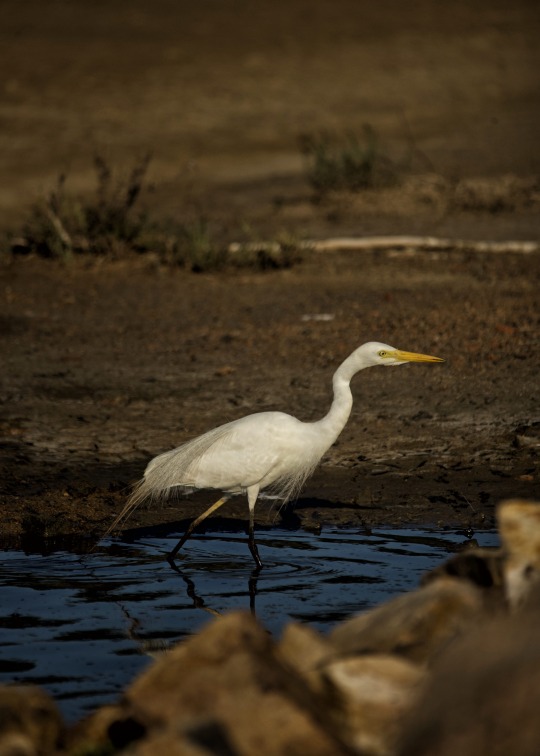
Intermediate Egret (colour)
#australia#original photographers#photographers on tumblr#wildlife#wildlife photography#bird photography#bird
2 notes
·
View notes
Text
Lesser Than The Great

An Intermediate Egret atop a tree in a local park. Photo credit: Jonathan Chua.
This egret seemed to have a circle-of-fear of 30 metres (about 32 yards). Despite approaching slowly and occasionally stopping to calm it down, it had still eventually got spooked and flown up onto this tree.
The sun was pretty harsh so this was captured with 2 stops of underexposure to keep the white feathers from being washed-out. Shadows were then brightened in post. The face of the egret was also brightened separately. Bokeh in the original capture was quite nervous so the background was darkened in post. This was done with the egret and willow treetop assigned to a layer mask and then the bokeh in the background darkened away.
#photographers on tumblr#Ardea intermedia#bird photography#bird pics#canon eos 50d#canon photography#flora fauna#intermediate egret photos#photography editing#photography tips#tamron 16-300mm
0 notes
Text

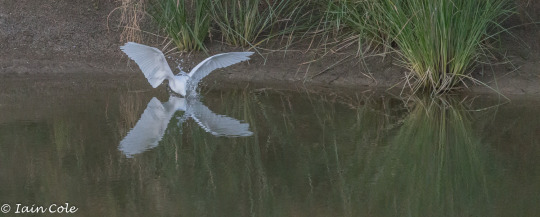
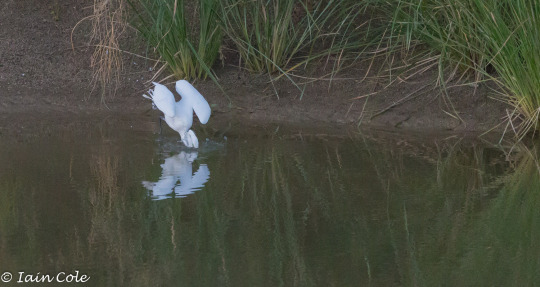


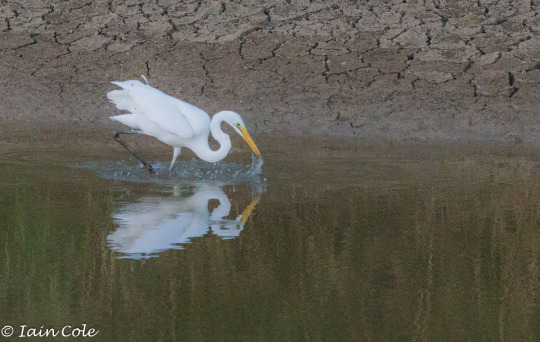
Hunting
(On my travels)
Intermediate Egret, Hughenden
#original photographers#nature photography#bird photography#wildlife photography#intermediate egret#Hughenden
23 notes
·
View notes
Text
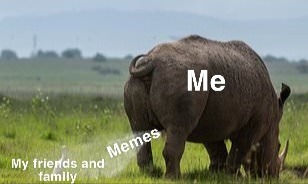
2 notes
·
View notes